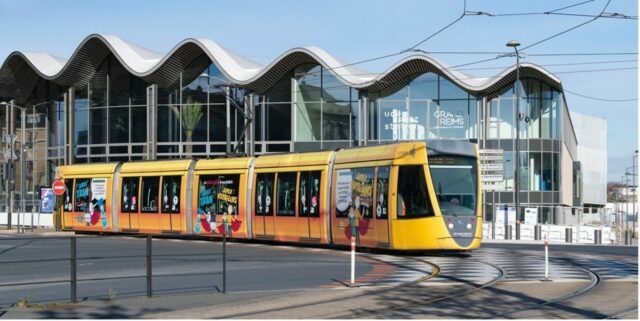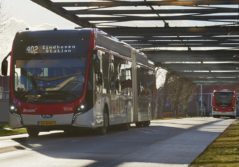Villes et territoires

Metropolises: building the smart city
Public transportation is a major issue for large cities. In very large urban areas, 58% of city-center inhabitants and 28% of other inhabitants use public transport at least once a week.
As a pioneer in Mobility as a Service, we are working to create, together with large urban areas and metropolises, the cities of tomorrow. Given the challenges of traffic congestion, parking problems and the growing awareness of the environmental advantages of public transport, the challenge for metropolises is to build intermodal and multimodal mobility systems that integrate new means of transport such as car pooling, while offering innovative payment and passenger information services to improve the customer experience.
- think regionally: advise political decision-makers on the development, renovation and operation of connection hubs via our subsidiary Transamo;
- attract passengers to the transport networks: develop or redesign mobility hubs to make them more attractive;
- convert car drivers: design and operate relay parking lots to help drivers switch to public transport;
- improve the customer experience: innovate with intuitive signage, safe and simplified pedestrian paths, minimized waiting times, integrated pricing and real-time, multimodal information in order to revolutionize the traveller’s experience;
Medium-sized cities: encouraging eco-mobility
Today, 20% of the inhabitants of medium-sized cities use public transport regularly. Collective transport is at the heart of tomorrow’s mobility solutions, helping create more environmentally friendly cities.
As a specialist in integrated networks and the joint management of transport modes, we support medium-sized cities in the development of alternative solutions to the use of individual cars. We offer reliable, efficient and clear solutions to encourage the use of public transport.
Our “smart mobility” research allows us to test solutions to streamline and facilitate the use of public transport, thereby responding to the changes in transport modes and social trends.
Sparsely populated areas: revitalize inter-urban areas and create relationships
More than one out of every two French people live in rural or suburban areas, often characterised by wide geographical spreads, which can sometimes force them to keep atypical schedules with regard to transport times. As a transport leader between cities in France, we are helping connect outlying areas by facilitating the mobility of these populations.
Our innovation efforts are particularly focused on the least connected areas. Express and regular lines, school routes, suburban connections or on-demand transport, car sharing, transport of people with reduced mobility… Our full range of services allows us to adapt ourselves to the specific needs of each local authority.
In regions outside major cities, we promote intermodal solutions, which we consider as a major asset for such areas. In Provence-Alpes-Côte d’Azur, for example, seven regional express lines play a fundamental role, in particular in the transport of travellers to railway stations and airports. They connect the five departments in the region and represent, by themselves, one third of the regional inter-urban transportation network.



